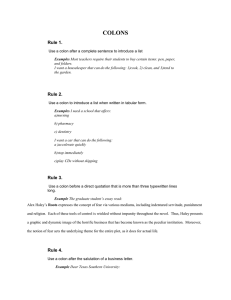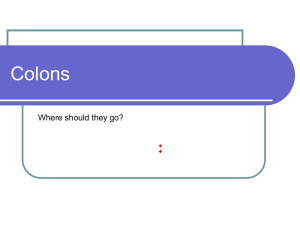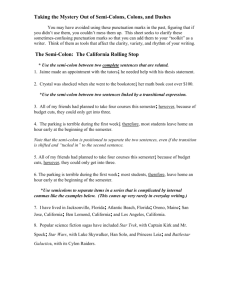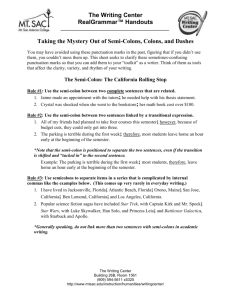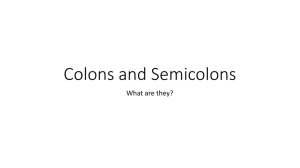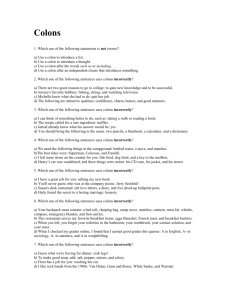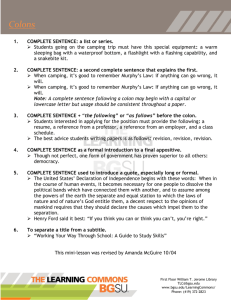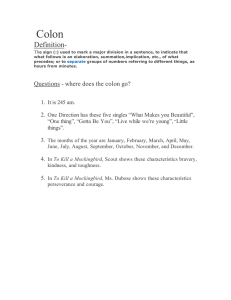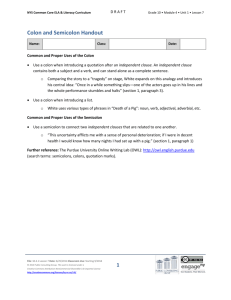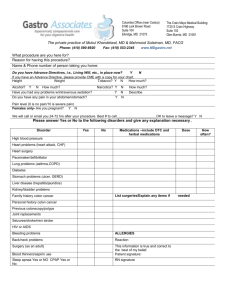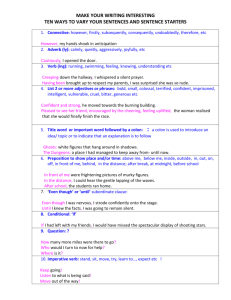What is a colon?
advertisement
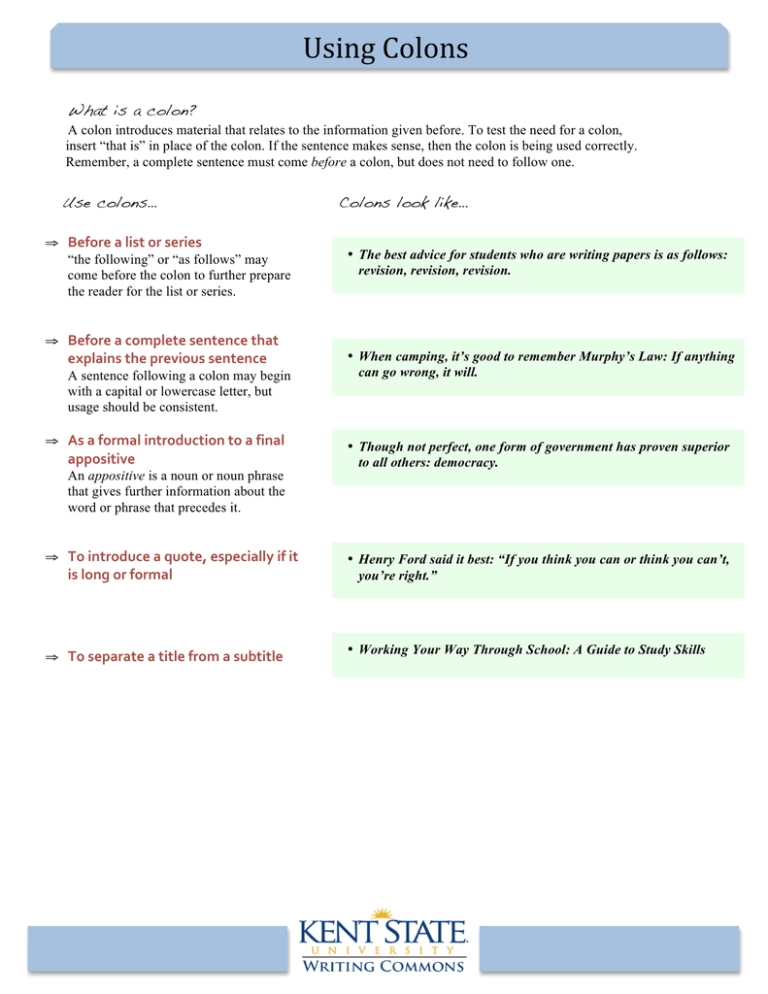
Using Colons What is a colon? A colon introduces material that relates to the information given before. To test the need for a colon, insert “that is” in place of the colon. If the sentence makes sense, then the colon is being used correctly. Remember, a complete sentence must come before a colon, but does not need to follow one. Use colons… ⇒ Before a list or series Colons look like… “the following” or “as follows” may • The best advice for students who are writing papers is as follows: revision, revision, revision. come before the colon to further prepare the reader for the list or series. ⇒ Before a complete sentence that explains the previous sentence A sentence following a colon may begin with a capital or lowercase letter, but usage should be consistent. • When camping, it’s good to remember Murphy’s Law: If anything can go wrong, it will. ⇒ As a formal introduction to a final appositive An appositive is a noun or noun phrase that gives further information about the word or phrase that precedes it. ⇒ To introduce a quote, especially if it • Though not perfect, one form of government has proven superior to all others: democracy. • Henry Ford said it best: “If you think you can or think you can’t, you’re right.” is long or formal • Working Your Way Through School: A Guide to Study Skills ⇒ To separate a title from a subtitle Using Colons Do NOT use colons… ⇒ Between a verb and its object or complement Colons look like… • He likes to play: soccer, baseball, and tennis. ________________________________________________________ • He likes to play soccer, baseball, and tennis. c ⇒ Between a preposition and its object Or before phrases like such as, especially, or including • The coordinator is in charge of: registration, cabin assignments, and camp clean-up ________________________________________________________ • The coordinator is in charge of registration, cabin assignments, and camp clean-up c
